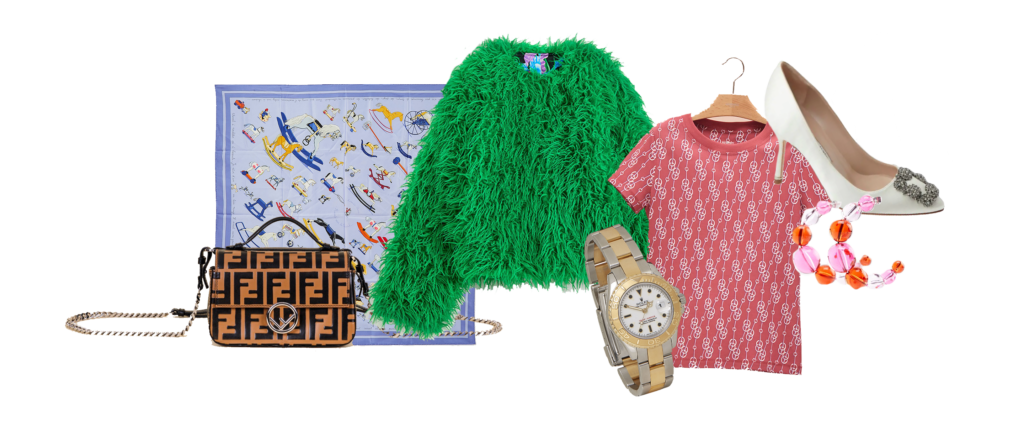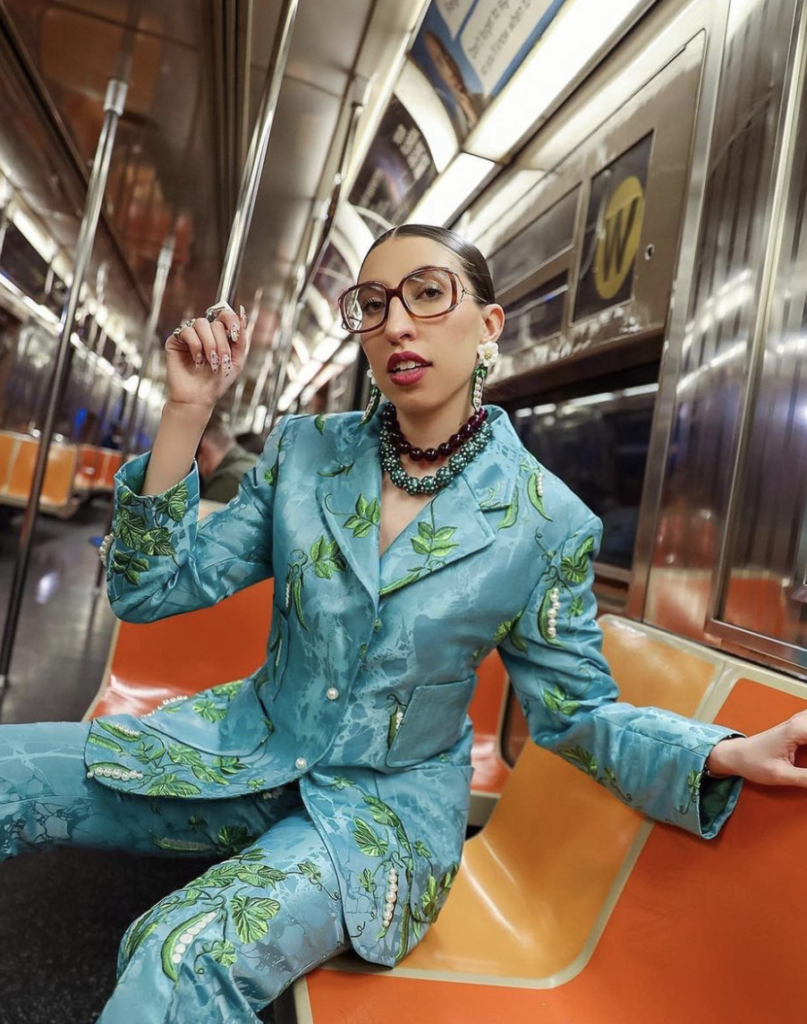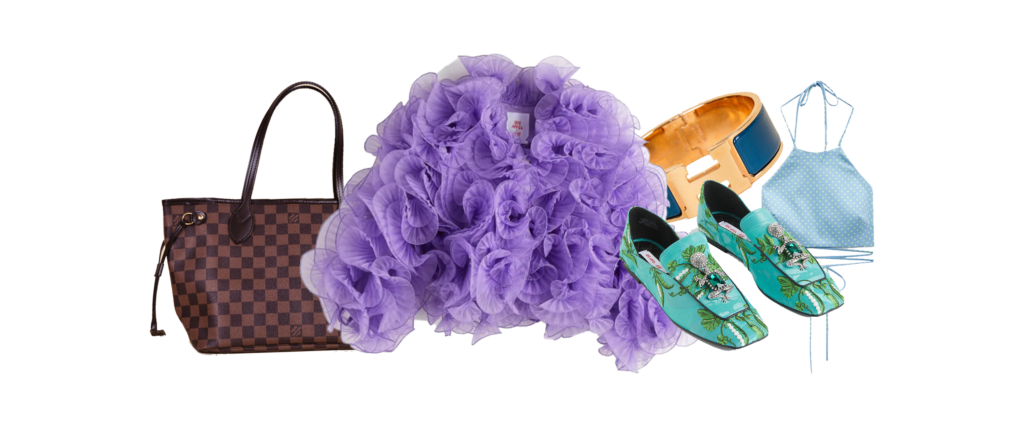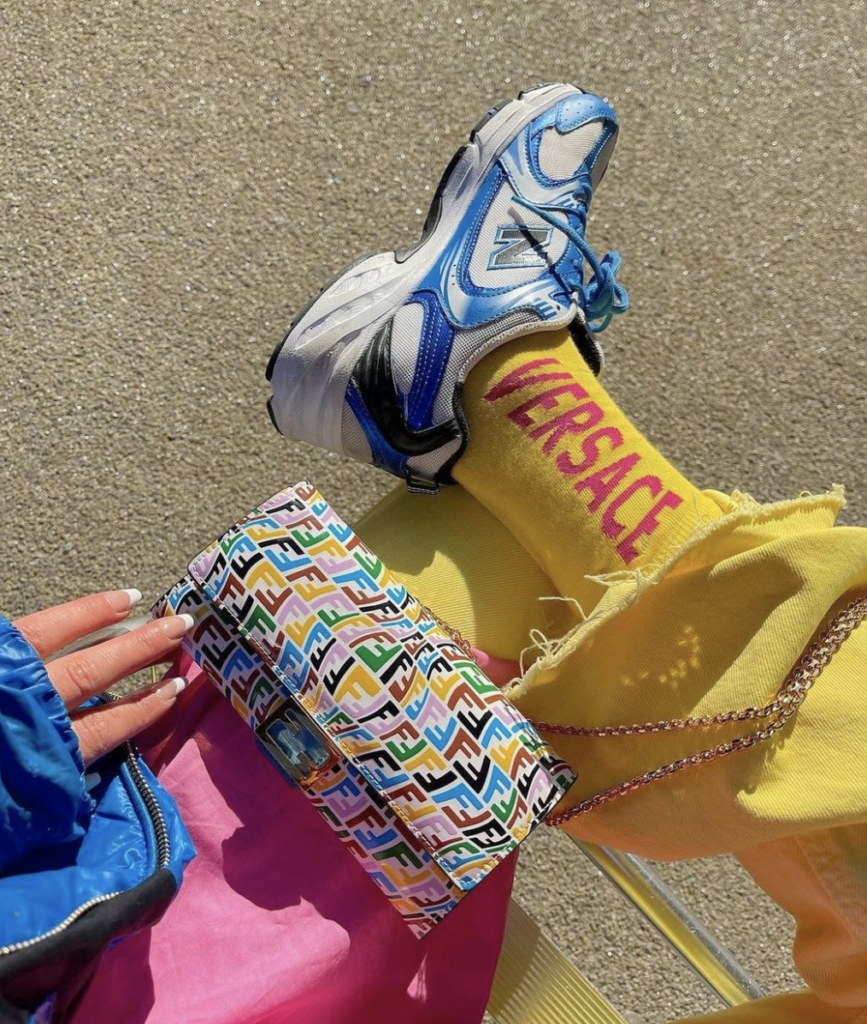You’d be hard pressed to find a discussion (or any given article on the internet) around the topic current trends, getting dressed or going shopping without the phrases “eco-friendly,” “sustainable,” or “green” thrown about. Or perhaps you’ve just committed to memory the oft-repeated stat that fashion is the second most polluting industry (which, by the way, isn’t in any way true or based in fact).
But we’d like to put forth another point on the topic: luxury fashion might just be inherently sustainable. At least when viewed in comparison to fast fashion.

Luxury Consumers Naturally Practice ‘Slow Fashion’
Due to the cost of some designer goods, like a pair of sparkling Manolo Blahnik heels that’ll cost you around $1,500 or an Hermès Birkin bag that’ll set you back $10K (on the low end), the price point of luxury fashion causes most consumers to be conscious of their consumption choices. The average shopper will have to think twice, or plan accordingly, before handing over their credit card for those items—and that moment of consideration means that the purchase is a mindful one.
But before you even get to the point of sharing your payment details with your sales associate, you walk into the store and become immersed in the luxury shopping experience. You might be wooed with a glass of champagne and a private room from which you can peruse, or your fave SA might present you a few exclusive items that are catered to your taste. This visit to a store is made even more special by knowing your purchases will come home with you packaged beautifully, in boxes you’ll want to keep, with dust bags that’ll definitely get reused and on hangers you can’t bear to part with. This not-so-everyday experience feels meaningful, even if the purchase was made online. Which isn’t exactly how people tend to recount their fast fashion shopping sprees with items that usually end up in a landfill after just a few months.

Since it seems there’s always something new on the shelves at Zara (according to Business of Fashion, the mega retailer drops new collections every two weeks) and the sales associates are notoriously rude, the fast fashion shopping experience is far from enjoyable. Yes, even when you’re elbowing your way to snag the latest H&M designer collab.
Shopping fast fashion can often feel like running an errand or completing a chore, especially when it has to be done so often. According to The New York Times, the cheaply-made pieces of clothing found in high street stores were designed to be worn no more than 10 times and that is a pretty significant contributor to the fact that, on average, each American is responsible for 75 pounds of textile waste each year.
Luxury Products Are Made To Last
Luxury products, on the other hand, are designed to have a longer lifespan. That means you’re able to rely on the quality to last for years or decades and, in case something does happen, most big luxury brands have their own in-house repair services to help keep your purchases looking new for as long as possible. These brands also have the budgets to experiment with and perfect more unique materials, which explains why they’ve moved away from alluring shoppers with rare ostrich skin or plush furs. The latest trend in luxury materials doesn’t involve any animal cruelty at all and requires far fewer resources to create. Yup, we’re talking about the rise of vegan mushroom leather, like Mylo that’s being used by brands such as Stella McCartney for runway-ready corsets and handbags and Mercedes Benz, who created an electric car with mushroom leather seat details. Hermès has even partnered with MycoWorks, another funghi leather brand, to create their very first vegan bag.

The Resale and Reuse of Luxury Fashion
Since luxury items are seen as investment pieces they don’t usually end up in landfills; shoppers tend to pass along timeless pieces to friends and family, or they offload items on resale sites. And one look at a site like The Real Real or Vestiaire Collective shows that there’s not only an interest in second-hand luxury goods, but a genuine hunger for these pieces. Shoppers are willing to shell out hundreds and thousands for lightly used, pre-owned items so long as they’re in pretty good condition. That’s another inherently sustainable move; buying something pre-owned requires much less resources than buying something that needs to be produced, in addition to requiring a lot less plastic and paper packaging and stuffing. Shoppers can even avoid the carbon footprint of shipping by visiting resale shops IRL, like The Real Real’s nation-wide boutiques or the iconic What Goes Around Comes Around in New York City, which is a veritable haven of lightly loved Chanel bags and early ‘90s Versace gowns.

In addition to resale, luxury rental services are also having a moment. Like Vivrelle, a destination for Louis Vuitton, Bottega Veneta and Fendi bags that can be rented for everyday use, a dressy event (or even an Instagram post) and returned for just a few hundred a month.
So, whether you’re struggling with your fast fashion addiction or just needed another push to make that splashy Bottega Veneta purchase, perhaps knowing that you can spend your money more wisely with big ticket purchases will help lessen the blow when you read the next climate report. Or receive your next credit card statement – whichever comes first.
